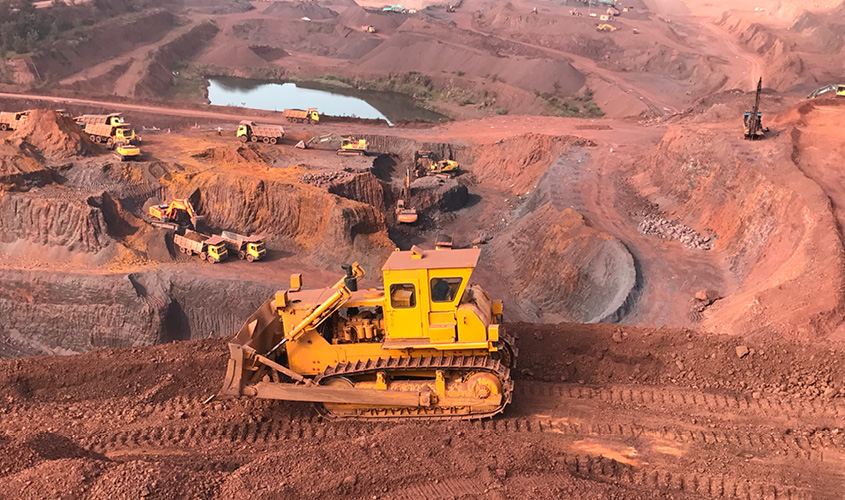Even as the “heavy mineral sand mining” industry holds potential to significantly contribute to the “Make In India” initiative, lack of reforms make it difficult for industry players to exploit the full potential.
India has about 20% of global reserves of sand minerals, but despite having been opened to the private sector for the last two decades, the production to reserve ratio has been woefully low at 0.002. India produces about 9% of the world’s total Ilmenite production.
Pradeep Koneru, managing diretor, Trimex Sands Pvt. Ltd, said, “We are equipped with raw materials to support the vision of the Prime Minister’s ‘Make in India’ initiative with the motto of ‘Zero Effect’ on the environment and society, along with ‘Zero Defect’ manufacturing sector. We believe that we must mine in India to Make in India and for that mineral sand mining industry should get encouragement from the government.”
Industry experts explain that “Heavy Mineral Sand mining” and “sand mining” are different. Sand mining for construction purposes involves 100% of mining and no back filling of the mined out areas is usually carried out.
On the other hand, “Heavy Mineral Sand Mining” does not involve mining of sand per se, but involves mining of 5-6 different types of heavy minerals which fall in the category of “major minerals”, mostly used in hi-tech industries.
Further, all the heavy minerals together comprise only 10-15% of the useful minerals taken out from the mining area and the balance 85-90% is sand which goes back to the mine for back filling and helps in bringing back the topography to its original shape as it existed prior to mining and plantation thereafter.
Since “Heavy Mineral Mining” comes under the management of both the state government and the Central government, on an average it requires clearances from 15 different regulatory bodies, including the Coastal Regulatory Zone Authority (CRZA) and Atomic Energy Regulatory Board (AERB), that on an average take 10-12 years to start a company. As of now, there are only four or five odd players in ilmenite mining, the most revenue generating mineral among heavy mineral mining.
Koneru said, “As of now, 70-80% of ilmenite mined by Trimex is exported to countries like China, Japan and Europe. It would contribute a great deal if we could mine enough to meet the demand that exists in international markets.”
On the domestic front, industry players say that India’s mineral sand mining can achieve phenomenal growth and support the government in the development of local communities in the backward districts which need to be supported with enabling policies and environment. With a set of policy push and reforms, this industry could potentially grow three-fold by 2025 and can enable companies to set up value addition facilities to substitute imports.
Echoing the industry’s view, Koneru said, “A series of reforms are needed to help the industry grow to its full potential. Among others, this capital intensive industry should be given all support and speedy clearances and approvals that would allow companies to make further required investments in equipment, technology and other requisite resources, to ensure global competitiveness and ensure market leadership of India as a heavy minerals provider.”

